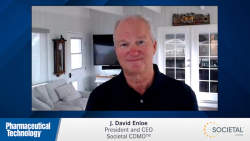
OR WAIT null SECS
- About Us
- Advertise
- Contact Us
- Editorial Info
- Editorial Contacts
- Editorial Advisory Board
- Do Not Sell My Personal Information
- Privacy Policy
- Terms and Conditions
© 2024 MJH Life Sciences™ and Pharmaceutical Technology. All rights reserved.
Public Safety versus Public Disclosure
When should there be restrictions on the dissemination of basic research results? This question has arisen in the context of papers from independent laboratories submitted to the journals Science and Nature.
When should there be restrictions on the dissemination of basic research results? This question has arisen in the context of papers from independent laboratories submitted to the journals Science and Nature. Ron Fouchier and colleagues from the Erasmus Medical Center in Rotterdam, the Netherlands and a team headed by Yoshihiro Kawaoka of the University of Wisconsin-Madison, were both studying the H5N1 strain of flu virus, which causes avian flu. Avian flu can decimate flocks of poultry, but is rarely transmissible to humans. Nevertheless, because of the close proximity in which humans and poultry reside, there is concern that the virus could someday acquire the ability to infect mammals, and become the source of a pandemic. Both laboratories, working independently, identified mutations in H5N1 that allowed mammal-to-mammal transmission, using ferrets as the experimental model.
In a rare response to those findings, the Department of Health and Human Services, acting on advice from The National Science Advisory Board for Biosecurity (NSABB) asked the authors of the papers and the editors of the journals to publish the papers in redacted form, where the conclusions would be published, but the methodology would not be made public. HHS also asked that language be added to the publications outlining the goals and potential health benefits of the research and detailing the safety measures taken to protect the laboratory workers and the public. In a press release issued by the National Institutes of Health, the agency said “Recognizing the significant potential benefit of the information about the experimental details to the global influenza surveillance and research communities, the US government is working to establish a mechanism to allow secure access to the information to those with a legitimate need in order to achieve important public health goals. The US government is also developing a proposed oversight policy that would augment existing approaches to evaluating research that has the potential to be misused for harmful purposes.”
The authors agreed to the government’s request, and went a step further. In open letters published in Science and Nature, the authors of the papers jointly called for a 60-day moratorium on the creation of new H5N1 strains, to allow time for public discourse on the merits of the research as well as its risk. In the letter, the authors state: “We recognize that we and the rest of the scientific community need to clearly explain the benefits of this important research and the measures taken to minimize its possible risks. We propose to do so in an international forum in which the scientific community comes together to discuss and debate these issues. We realize that organizations and governments around the world need time to find the best solutions for opportunities and challenges that stem from the work.”
Scientists are divided on whether redaction of the data is really in the public interest. Nonetheless, the willingness to pause for an open discussion about the risks versus benefits of this type of research will go some way towards balancing public safety with public health goals.


